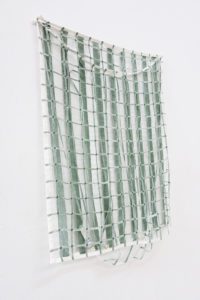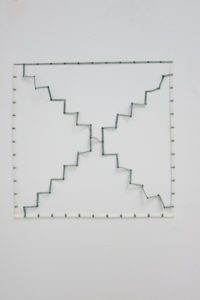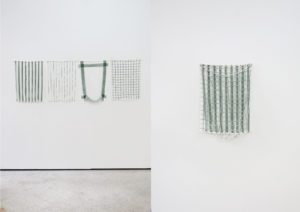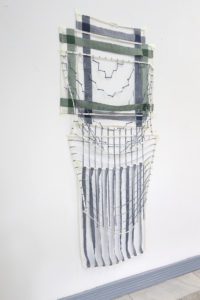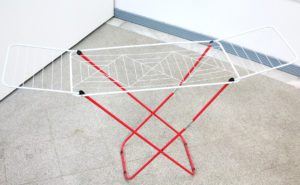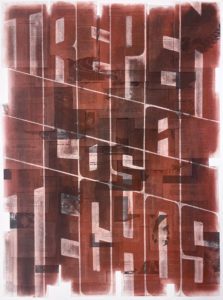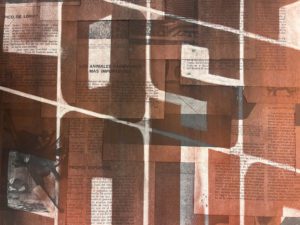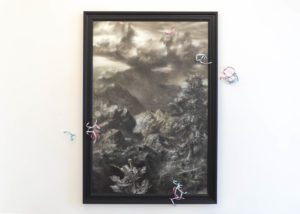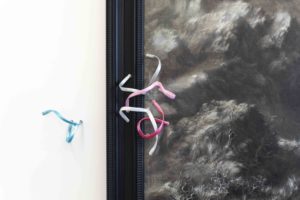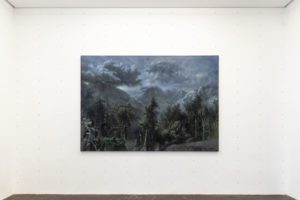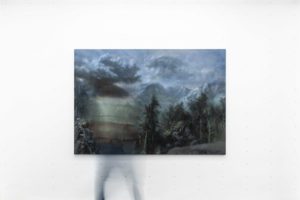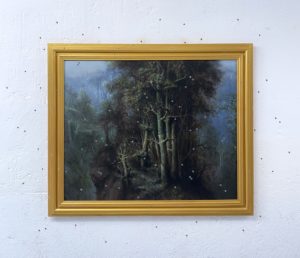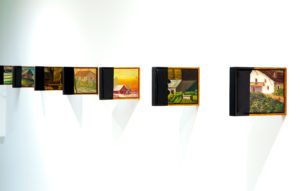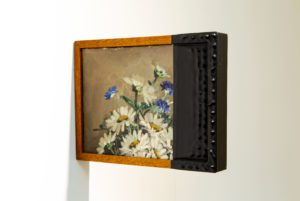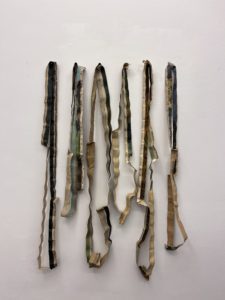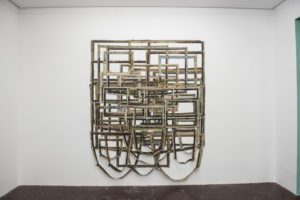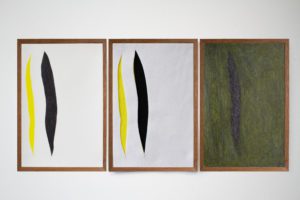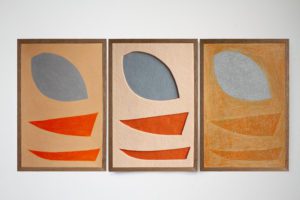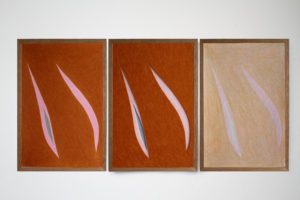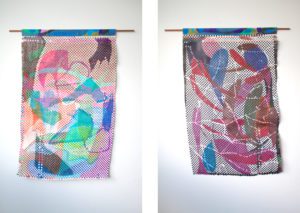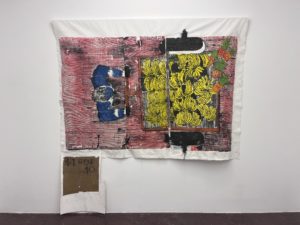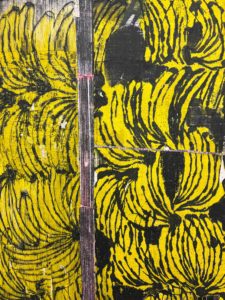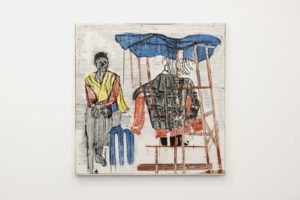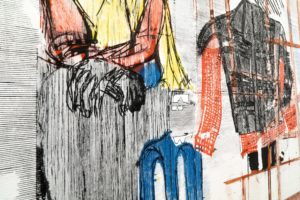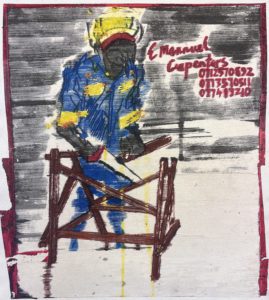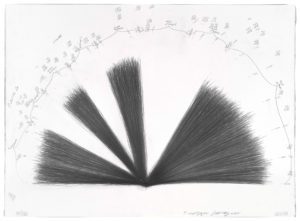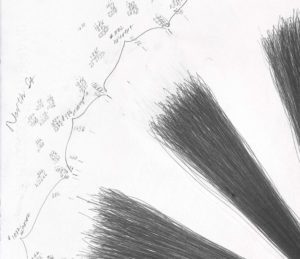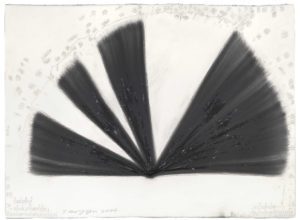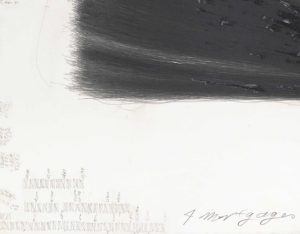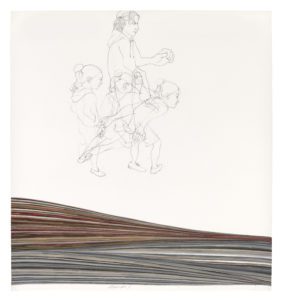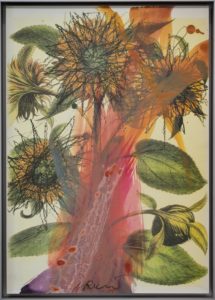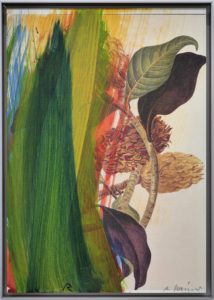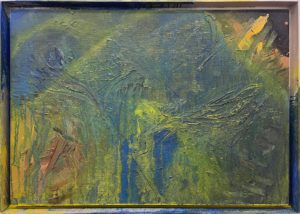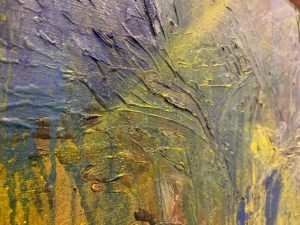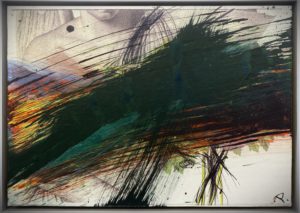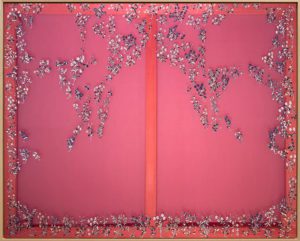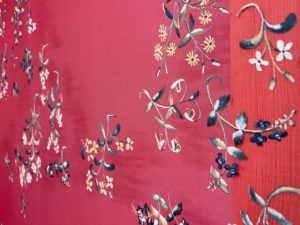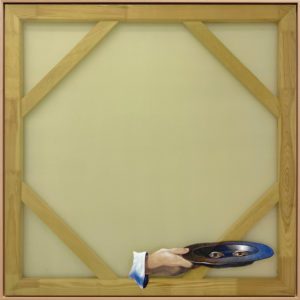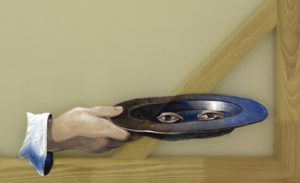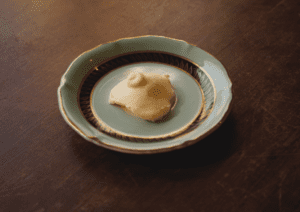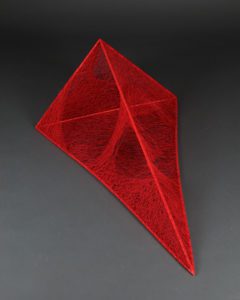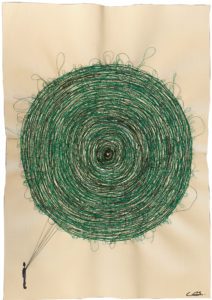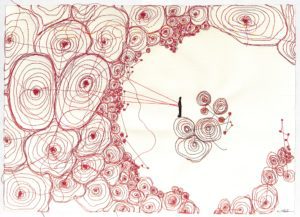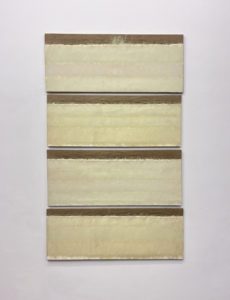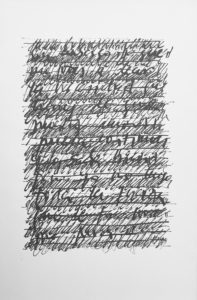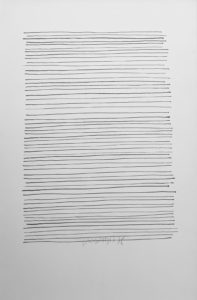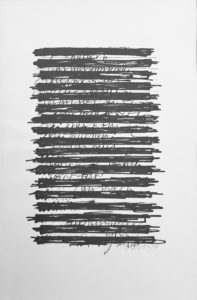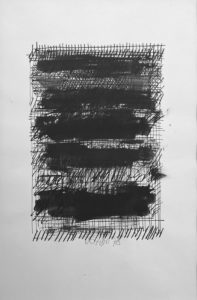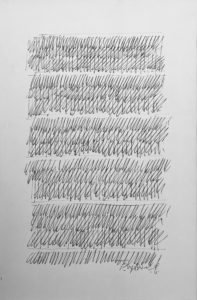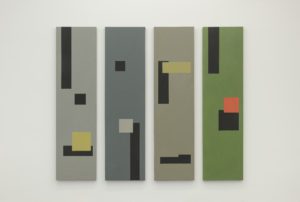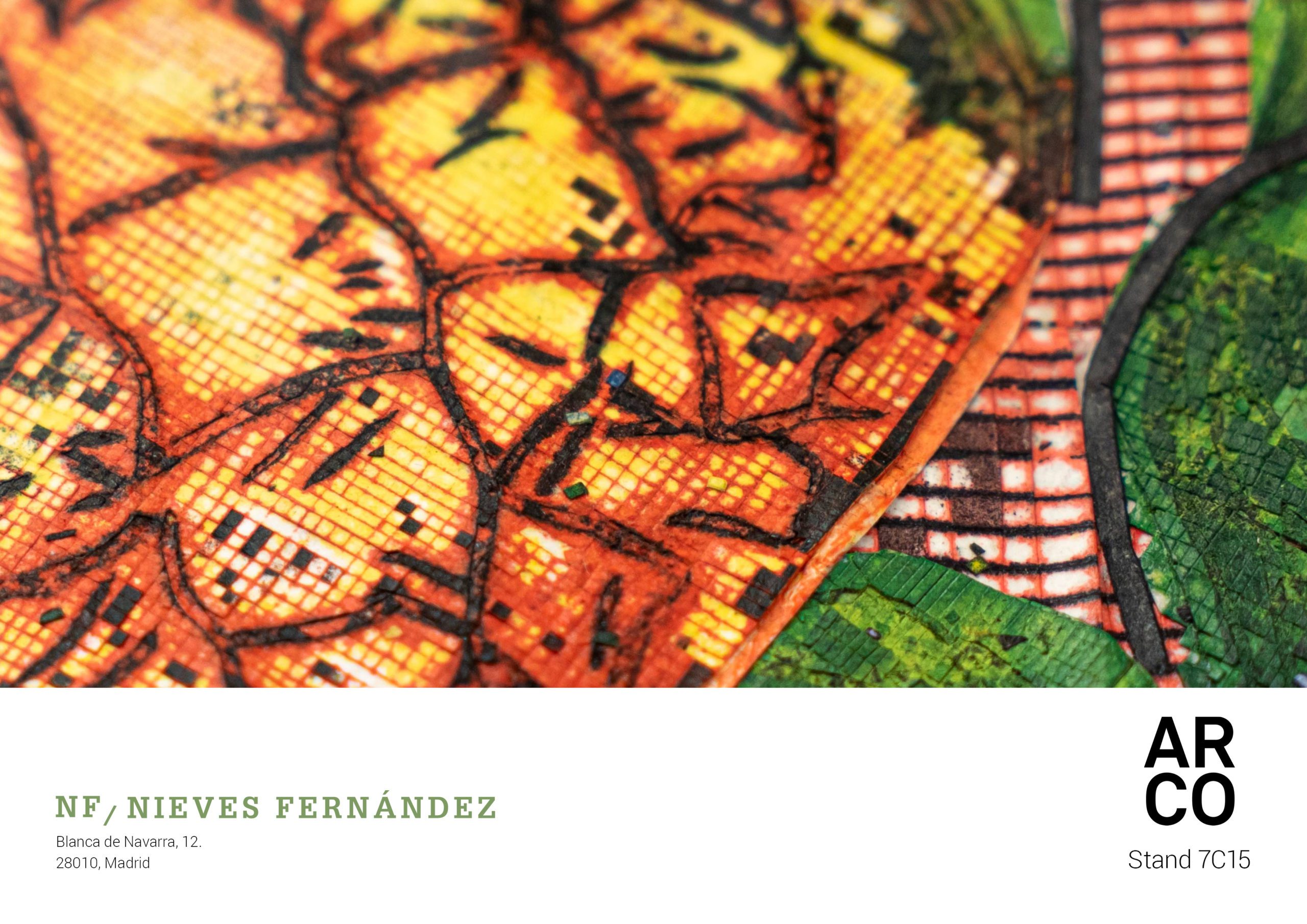
ARCO 2025 – Dossier fr
Tamara Arroyo
Espagne, 1972
Dans le corpus d’œuvres de l’artiste, il y a une insistance sur l’habitabilité des espaces. Arroyo interroge la «domestication» de l’habitant moderne et la consommation de certaines formalités et objets dans les intérieurs des habitations contemporaines. La référence autobiographique présente dans son travail sert à articuler un discours sur la mémoire individuelle et collective.
Par la récurrence de l’image des lieux dont Arroyo s’approprie, la ville et l’espace public apparaissent comme un décor privilégié du quotidien, avec ses signes d’identité et son grand potentiel créatif.
À travers différentes formalités, ses œuvres parlent de l’influence de l’environnement et de son architecture sur nous, en distinguant entre l’espace vécu, expérientiel ou existentiel, qui opère inconsciemment.
L’artiste met l’accent sur différents états intellectuels qui émergent dans notre relation avec notre environnement immédiat, tels que le besoin émotionnel d’appartenance à un lieu ou l’importance de la vision périphérique qui nous intègre dans l’espace. Cette dernière nous permet d’apprécier des détails et des situations qui, parfois, passent inaperçus, et nous fait passer du statut de simples spectateurs à celui de récepteurs d’autres stimuli.
Elle a exposé dans des institutions telles que le Museo Centro de Arte Dos de Mayo, La Casa Encendida, Matadero Madrid Centro de Creación Contemporánea, CentroCentro, Es Baluard Museu, la Real Academia de España en Roma et l’Instituto Valenciano de Arte Moderno, entre autres.
Ses œuvres font partie des collections du Museo Nacional Centro de Arte Reina Sofía, du Centro de Arte Dos de Mayo, du Museo de Arte Contemporáneo de Madrid, de la Colección DKV et de la Colección Banco Sabadell.
Tamara Arroyo
Relaciones (I)
2016
Toile
72 x 65 cm
Tamara Arroyo
Relaciones (II)
2016
Toile
65 x 65 cm
Tamara Arroyo
Relaciones (III)
2016
Toile
100 x 60 cm
Plus d’informations et œuvres disponibles de Tamara Arroyo ici
Mauro Giaconi
Argentine, 1977
L’œuvre de Mauro Giaconi explore les possibilités du dessin en tant que champ élargi. À travers celui-ci, l’artiste s’étend à d’autres disciplines, comme la sculpture ou l’installation, afin d’examiner l’architecture, la précarité et le corps en tant que territoires en conflit.
Dans cette perspective, l’artiste subvertit aussi bien le support papier que l’idée du dessin comme expression élémentaire de la pratique artistique, aboutissant à l’occupation de l’espace, à l’acte performatif mettant l’accent sur l’expérience corporelle, et à l’intervention d’objets et de références universelles appartenant à la métanarration contemporaine.
Sur le plan conceptuel, son travail présente souvent des contenus et des expériences qui tendent à mettre en tension ou à annuler des notions opposées, telles que naissance et mort, construction et destruction, liberté et enfermement, comme un geste invitant à revisiter et à questionner la signification dichotomique des idées.
Par ailleurs, Mauro Giaconi joue un rôle actif dans la critique des systèmes de production artistique. En 2014, il a cofondé les projets Obrera Centro, un espace autogéré favorisant l’expérimentation artistique interdisciplinaire, et HerratecA, une bibliothèque populaire d’outils. Ces initiatives révèlent l’intérêt de l’artiste pour les pratiques collaboratives qui génèrent de nouveaux espaces et actions transformatrices, dans l’idée que le collectif et le dialogue ouvrent de nouvelles possibilités d’accès à la culture et au progrès.
Il a réalisé des expositions individuelles au Boulder Museum of Contemporary Art, au Museo de Arte Moderno de Buenos Aires et au Museo Universitario del Chopo, et a participé à des expositions collectives au Gregory Allicar Museum of Art, au Centro Cultural Recoleta et au Museo del Palacio de Bellas Artes de Mexico.
Ses œuvres font partie de collections telles que la Colección Jumex, la Fundación Calosa, la SPACE Collection et le Bemis Center for Contemporary Art.
Mauro Giaconi
Trepen a los techos 01
2023
Pigment et gomme sur pages d’encyclopédie
110 x 80 cm
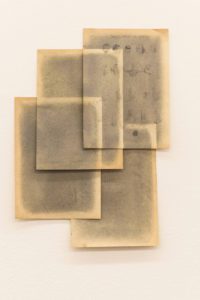
More information and available works by Mauro Giaconi here
Pipo Hernández Rivero
Espagne, 1966
Les œuvres de Pipo Hernández Rivero remettent en question toute certitude culturelle. Construites à partir d’images et d’idées ancrées dans la culture moderne, elles évoluent dans un territoire de doute et d’opacité.
En interrogeant la complexité des possibilités de la peinture au XXIe siècle, son travail propose une reconsidération du pictural à travers des structures formelles et conceptuelles sous lesquelles affleurent des références à l’échec des avant-gardes culturelles. Il met en évidence la manière dont la standardisation de certains discours peut conduire à l’exclusion de voix alternatives.
Mêlant la peinture à divers matériaux et intégrant des textes dans des langues échappant à notre lecture depuis une perspective occidentale, ses pièces nous plongent dans des environnements liés à des problématiques politiques. Elles confrontent ainsi le spectateur à un dialogue non résolu, l’incitant à repenser les notions d’identité et de valeur.
Il a exposé dans des institutions telles que le Centro Atlántico de Arte Moderno, la Fundación MARSO, le Museo de Arte de Pereira, ARTIUM Museoa, le Centro de Arte La Recova, le Círculo de Bellas Artes de Tenerife, la Fundación Otazu, le Musée d’Art de Budapest, le Centre del Carme Cultura Contemporània, le Musée d’Art de Prague et la Sala de Arte Contemporáneo de Tenerife. Il a également participé à des biennales comme la Biennale de La Havane, la Biennale des Canaries et la Biennale de Dakar.
Ses œuvres font partie de collections telles que le TEA Tenerife Espacio de las Artes, le Centro Atlántico de Arte Moderno, ARTIUM Museoa, le Musée d’Art Contemporain du Pays Basque, la Fundación MARSO, la Collection Galila Barzilaï, la Kells Collection, Olor Visual et MUDO Istanbul.
Pipo Hernández Rivero
“Algún día todo esto será tuyo- revisitado”
2024
Bois, plastique, huile et toile
248 x 205 x 6 cm
Pipo Hernández Rivero
Normas para una noche americana [Rules for an American Night]
2024
Huile, plastique et toile
160 x 230 x 4 cm (toile)
456 x 315 x 4 cm (installation)
Plus d’informations et œuvres disponibles de Pipo Hernández Rivero ici
José Luis Landet
Argentina, 1977
José Luis Landet’s work is conceived as a space where several modes of operating and assimilating cultural processes occur, crossed by social, political and ideological actions. His interest is centered on investigating sociocultural remains and wastes, as it could be seen through the retrieval of romantic and bucolic oil paintings from the 1940’s to the 1970’s, commonly made by amateur painters, the so called “Sunday painters”. In this sense, Landet’s work looks for a certain notion of paradise, recreating apocryphal.
The different materials that compose his works may be these pictoric representations, as well as other simbolic elements such as daily objetcts, photographies, letters, postcards, transparencies, writings, magazines and books, generating material and conceptual deconstructions.
The work of José Luis Landet reveals not only the materiality of its elements, but also its burden of memory, time and use. Likewise, each artistic project is embedded of especificities and, therefore, require a complex creative action from the artist, beginning at classification up until archiving, through cutting, breaking, covering, forging, soaking, fragmenting and simulating.
In this sense, the metaphorical-poetic actions of José Luis Landet are expressed in fronteer zones, between public and private, utopian past and distopian present, silence and communication and, even, a universalizing history and gestures for the historiagraphic reframing from a local context.
He has exhibited at institutions such as Fundación PROA, Museo Ex Teresa Arte Actual, FLORA ars+natura, and the Museo de Arte Contemporáneo de Oaxaca, among others.
His work can be found in collections such as Jumex, the Louisiana Museum, LACMA, the Jorge Pérez Collection, Museo de Arte Contemporáneo de Oaxaca, Sayago & Pardon, the JoAnn González-Hickey Collection, and the Brillembourg Capriles Collection.
José Luis Landet
La vida en los bosques [Life on the forests]
2021
Fragments of oil on canvas and black enamel
26,5 x 20,5 cm each (8 pieces)
11.000 € (VAT included)
José Luis Landet
Bordes
2019
Fragments of canvases
140 x 110 cm
11.000 € (VAT included)
More information and available works by José Luis Landet here
Daniela Libertad
Mexico, 1983
The works by Daniela Libertad in drawing, photography and video, explore the several relations among geometric forms, objects and her own body, the perceptions on what is intangible, mystical and their connections with everyday life.
The artist investigates also on how sculptural dynamics are constructed and deposited into objects, in an effort to understand the relations of weight, tension and balance among materials, shapes and objects.
Her body of work pushes into tension the perceptions of what is both intangible and habitual. By using different media, the artist allows her work to confront immaterial elements and geometrical forms with common objects and her own body, exploring both the mystical and ethereal features of these components, and concrete aspects such as weight, density and touch. In these tension exercises, the artist unsettles the mixture between apparently opposite fields, between physical and mental or abstract and figurative, towards a stage of precarious balance between parts that, ultimately, inform us on a fragile and banal condition of our apprehension of day-to-day poetry.
She has exhibited at institutions such as Museo Ex-Teresa Arte Actual, Museo de la Ciudad de México, Akershus Kunstsenter, Kunstverein Wiesbaden, El Espacio23, Museum of Human Achievement, University of Maryland, VITA ROSEN, and Cine Tonalá Bogotá, among others.
Her work is part of the collections of Jorge Pérez, Fundación MARSO, and Fundación Otazu.
Daniela Libertad
Forma, fondo (fieltro) 4
2024
Felt, colored pencil on paper
21 x 29 cm each (Triptych)
4.000 € (VAT included)
Daniela Libertad
Forma, fondo (fieltro) 7
2024
Felt, colored pencil on paper
21 x 29 cm each (Triptych)
4.000 € (VAT included)
Daniela Libertad
Forma, fondo (fieltro) 8
2024
Felt, colored pencil on paper
21 x 29 cm each (Triptych)
4.000 € (VAT included)
More information and available works by Daniela Libertad here
Gareth Nyandoro
Zimbabwe, 1982
Gareth Nyandoro is noted for his large works on paper, which often spill out of their two-dimensional format and into installations that include paper scraps and objects found in the markets of Harare, where he lives and works. The artist’s chief source of inspiration is the daily landscape of the city and its residents, both within the local milieu and the larger cultural panorama of Zimbabwe. Inspired by his training as a printmaker, and derived from etching, the artist’s distinctive technique, Kucheka cheka, is named after the infinitive and present tense declinations of the Shona verb cheka, which means ‘to cut’.
He has exhibited at institutions such as Palais de Tokyo, Quetzal Art Centre, Rijksakademie, and Zeitz MOCAA, among others.
His work is part of collections such as MoMA New York, Zeitz MOCAA, Fondation Sindika Dokolo, Instituto Inhotim, Rachofsky Collection, SAM Art Projects and the National Gallery of Zimbabwe.
Gareth Nyandoro
$1 FOR 10 bananas
2024
Ink on paper on canvas
180 x 280 cm
33.000 € (VAT included)
Gareth Nyandoro
Bhero vendor
2024
Ink on paper mounted on board
124 x 124 x 5 cm
17.500 € (VAT included)
More information and available works by Gareth Nyandoro here
Danica Phelps
USA, 1971
The work of Danica Phelps gathers conceptual precedents not only by taking in account economy as a main theme of her work but also in the own practice of the data capture, the exhaustiveness, and in the record of the facts, that have been a main feature of conceptual art.
Since 1996 Danica Phelps has been documenting all of her income and expenses through drawings in a system that becomes increasingly layered and complex. In this system, each drawing is a depiction of a daily activity and documentation of a financial transaction, and each dollar is represented by a single stripe of watercolor: green for income, red for expense and grey for credit.
The result is a huge personal diary, even if speaking of results is hard. First because the work is always in process, and second because the work in itself is almost not a work in itself but a tracing, a document of pieces of everyday life.
She has participated in the Whitney Museum Triennial and has exhibited at institutions such as the New Museum, Hammer Museum, Brooklyn Museum, Fundación La Caixa, and Folkwang Museum, among others.
Her works can be found in the collections of the Brooklyn Museum of Art, Arkansas Art Center, Daimler Art Collection, Farnsworth Museum, Hammer Museum, Magasin 3 Konsthall, Seattle Art Museum, University of New Mexico Art Museum, Wien Museum, Yale Art Museum, Fundación La Caixa, and Tang Teaching Museum.
Danica Phelps
4 Mortgages January 2024
2025
Pencil on paper
55 x 76 cm
3.200 € (VAT included)
Danica Phelps
4 Mortgages 2024
2025
Pencil on paper
76 x 104 cm
3.200 € (VAT included)
More information and available works by Danica Phelps here
Arnulf Rainer
Austria, 1929
His commitment to the search for new pictorial approaches, accompanied by his performative work and extensive written documentation, have enshrined Arnulf Rainer as one of the most influential living artists.
Always exalting the body language that painting implies, the artist highlights the first forms of human expression and, in the 1970s, he begins to photograph himself, creating a link between the theatrical and the graphic as a means of expression.
Near to Viennese Actionism and exploring gestures through performance, he expands his practice to video, and begins painting with his hands, which will accompany him throughout his career.
Mainly interested in automatism and the desire to destroy conventional communication in order to recover the richness of human expression, Arnulf Rainer bases his expressiveness on the concealment of images of other artists and self-portraits, reaching abstraction and almost total obscuration of forms. In this sense, his body of work has always aimed to free itself from its own limitations, even exceeding by the form of canvases the conventional standards.
In 1978, he represented Austria at the Venice Biennale and participated in multiple editions of Documenta Kassel over the years. Several museums have dedicated retrospectives to his work, including the Albertina Museum, Stedelijk Museum, Guggenheim Museum, Nationalgalerie, Kunsthalle Bern, and Kunstverein Hamburg.
His works are part of collections such as Stedelijk, MoMA New York, Ludwig Museum, Tate Britain, the Metropolitan Museum, Guggenheim, and Centre Georges Pompidou, among others.
Arnulf Rainer
Blumenserie (I)
ca. 2000
Mixed technique on paper on wood
44 x 31,5 cm
31.000 € (VAT included)
Arnulf Rainer
Blumenserie (II)
ca. 2000
Mixed technique on paper on wood
44 x 31,5 cm
31.000 € (VAT included)
Arnulf Rainer
Hand- und Fingermalerei
1987-88
Oil on cardboard on wood
54 x 77 cm
142.000 € (VAT included)
More information and available works by Arnulf Rainer here
Clara Sánchez Sala
Spain, 1987
“Writing is trying to know what we would write if we wrote”
Marguerite Duras, Écrire, Gallimard, 1993
As an echo of the artistic practice of Clara Sánchez Sala, this quote by Marguerite Duras accompanies her entire production to date. If for Duras writing is an intention, for Sánchez, the act of creating is an attempt that takes place in the impossible meeting of past and present.
The artist constantly remembers and measures her favorite trips, the time that elapses between autobiographical events and history. From this poetics of intimacy, she not only recreates her personal history, but also plays with temporal imbalances to awaken a feeling of estrangement from her personal environment.
Clara’s works are indications that point to the heuristic effect of distance. The artist thus places the viewer in the archaeologist’s situation, seeing the pieces as riddles that she cannot directly identify. Sánchez regularly uses this distancing process to question what is seen and what is known, and thus underline the idea of impermanence and incompleteness.
She has participated in exhibitions at the Museum of Abstract Art in Cuenca, Centro de Arte Dos de Mayo, Fundación MARSO, Fundación Otazu, La Laboral, EACC, and Centro Cultural Conde Duque.
Her work is part of collections such as the Centro de Arte Dos de Mayo, Colección DKV, Kells Collection, and Fundación Otazu, among others.
Clara Sánchez Sala
À mon seul désir
2025
Makeup on silk
133 x 163 cm
6.800 € (VAT included)
Clara Sánchez Sala
Mettersi un velo davanti agli occhi
2024
Makeup on silk
92 x 92 cm
4.600 € (VAT included)
More information and available works by Clara Sánchez Sala here
Chiharu Shiota
Japan, 1972
Heir of Ana Mendieta and a whole generation of feminist artists form the early 70’s, Shiota works with her body as an intervention space, realizing performances that deal with our link with the earth, the past and the memory.
Well known for her installations with thread as main material, her symmetric tangles captivate the spectator at first sight, creating feelings that go between safety and fear, fascination and ugliness, while awakening memories, and both absence and existence as philosophical matters.
The presence and absence of her body is the thread running through her work, and ultimately is what makes it possible to understand her confrontation with the question of defining the artwork, the artistic subject and the public, the interior and exterior space.
In Shiota’s philosophy the true artwork is created only when the expectations for familiar artistic forms of expression are abandoned in favor of a perception of things that get by without any attributions of meaning.
She has exhibited at institutions such as Gropius Bau, Mori Art Museum, Jameel Art Centre, Gottesborg Museum, The Art Gallery of South Australia, Louisiana Museum, Kiasma, Hayward Gallery, Fundación Sorigué, Palazzo Reale Milano, The Museum of Kyoto, Maison Rouge, MONA Museum, and Mattress Factory, among others.
She represented Japan at the 56th edition of the Venice Biennale. Additionally, she has designed the scenography for the opera Matsukaze alongside Sasha Waltz and for Tristan and Isolde at KielTeater.
Her work is part of collections such as the National Museum of Modern Art, Tokyo, Fundación Sorigué, Centre Georges Pompidou, and Kiasma, among others.
Chiharu Shiota
State of Being
2019
Thread on metal
35 x 62 x 134 cm
88.000 € (VAT included)
Chiharu Shiota
Connected to the Universe CS/D240512
2024
Thread on canvas
41,3 x 30,1 cm
16.000 € (VAT included)
More information and available works by Chiharu Shiota here
Jordi Teixidor
Spain, 1941
Considered as one of the most important representatives of the Spanish Abstraction, and National Prize of the Arts, Jordi Teixidor identifies himself with the modern tradition and critical thought, translating to his work a doubtful and critical spirit, developing abstraction and a work that is rational, genuinely Apollonian, superbly balanced, strictly contained with regard to expressive elements.
The modernity of Jordi Teixidor is reflexive and his paintings don’t look for satisfaction, but require the spectator to think, denying a narrative reading.
More than a tour de force abput the possibilities of the abstraction at the present time, his work must be understood as an aesthetic and intelletual reflection on the limits of painting, as a search after the non painting, as the unattainable desire of making the final picture, or, what it is the same, the non- picture, but also as the personal expression of a feeling of ethical-political failure.
Through his use of black, Teixidor has formalized a solemn sequence of images that make up one of the most outstanding tragic expressions in contemporary Spanish painting.
He has participated in the Venice Biennale and has exhibited at institutions such as the Guggenheim Museum in New York, the Spanish Academy in Rome, the Museo Nacional Centro de Arte Reina Sofía, UNAM Museo de Arte Contemporáneo in Mexico City, and IVAM, among others.
His work can be found in collections such as the Guggenheim Museum in New York, Museo Nacional Centro de Arte Reina Sofía, Instituto Valenciano de Arte Moderno, Fundación Juan March, Colección Banco de España, Colección Stuveysan, Museo Patio Herreriano, Centro Atlántico de Arte Moderno, SFMoMA, Fundación La Caixa, and the Berkeley Art Museum.
Jordi Teixidor
Untitled 339
1978
Oil on canvas
171 x 105 x 3 cm
30.000 € (VAT included)
Jordi Teixidor
Untitled (I)
1978
Ink on paper
35 x 24 cm
5.000 € (VAT included)
Jordi Teixidor
Untitled (II)
1978
Ink on paper
35 x 24 cm
5.000 € (VAT included)
Jordi Teixidor
Untitled (III)
1978
Ink on paper
35 x 24 cm
5.000 € (VAT included)
Jordi Teixidor
Untitled (IV)
1978
Ink on paper
35 x 24 cm
5.000 € (VAT included)
Jordi Teixidor
Untitled (V)
1978
Ink on paper
35 x 24 cm
5.000 € (VAT included)
Jordi Teixidor
Untitled (VI)
1978
Ink on paper
35 x 24 cm
5.000 € (VAT included)
More information and available works by Jordi Teixidor here


